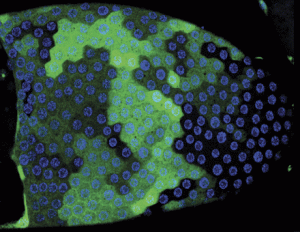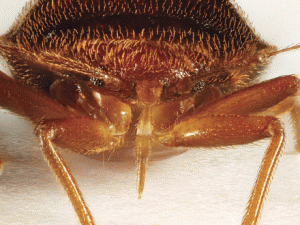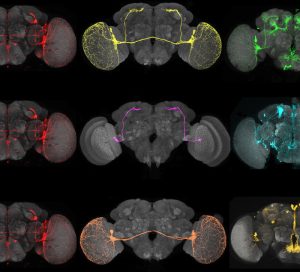Enter your address to receive notifications about new posts to your email.
Articles tagged G3 Journal
(226 results)
-
New in G3: chicken genome assembly, Drosophila co-CRISPR, and more
Check out the January issue of G3! Table of Contents Investigations The CgHaa1-Regulon Mediates Response and Tolerance to Acetic Acid Stress in the Human Pathogen Candida glabrata Ruben T. Bernardo, Diana V. Cunha, Can Wang, Leonel Pereira, Sónia Silva, Sara B. Salazar, Markus S. Schröder, Michiyo Okamoto, Azusa Takahashi-Nakaguchi, Hiroji Chibana, Toshihiro Aoyama, Isabel Sá-Correia,…
-
The fungus-fighting secrets hiding in the sugar pine’s enormous megagenome
Towering sugar pine trees dominate the mountain forests of California and Oregon. They are the tallest pine trees in the world, regularly growing to skyscraper heights of over 100 meters. But these forest behemoths are under attack from a very tiny foe: an invasive fungus. White pine blister rust was accidentally introduced to western North…
-
Publish your WGS data in G3 Genome Reports
Do you have whole genome sequence (WGS) data burning a hole in your pocket? Many high-quality WGS datasets languish unpublished and undescribed because they may not always—in isolation—reveal substantial new biological insights. However, the editors of G3: Genes|Genomes|Genetics recognize that WGS data on strain variation, comparative analysis of different model organism species, and other rich…
-
Fly model of traumatic brain injury untangles factors tied to mortality
Each year, emergency departments in the US treat almost 700,000 people for traumatic brain injury (TBI). The outcome depends largely on the severity and location of the injury, but these aren’t the only factors. Age also plays a role, with children often recovering more fully than do adults. The patient’s diet following the injury may…
-
New in G3: resistant bed bugs, stressed cotton, and outbred mice
Check out the December issue of G3! Table of Contents Meeting Report Meeting Report: The Allied Genetics Conference 2016 Organizers of The Allied Genetics Conference 2016 G3 December 2016 6:3765-3786; doi:10.1534/g3.116.036848 Full Text | Full Text (PDF) Investigations Assessing the Gene Content of the Megagenome: Sugar Pine (Pinus lambertiana) Daniel Gonzalez-Ibeas, Pedro J. Martinez-Garcia, Randi…
-
Dog pedigrees shed light on recombination
Recombination within the genome isn’t random. This swapping of DNA segments between one chromosome and its homolog preferentially affects specific genome regions called hotspots. These regions can have recombination rates many times higher than other areas of the genome, and the rapid shuffling of genetic information is thought to be important in evolution. The location…
-
Sex chromosome turnover in frogs hints at evolutionary patterns
Sex chromosomes have evolved from autosomes hundreds of times across the tree of life. In mammals, sex is controlled by the Y chromosome-linked gene SRY, which triggers the development of male anatomy. Sex determination in most mammals is extremely conserved; essentially all marsupials and placental mammals share the same pair of X and Y chromosomes…
-
GENETICS and G3 Fall 2016 Editorial Board Update
GENETICS and G3 are excited to welcome new editors! GENETICS and G3 Series Editor: Lauren McIntyre GENETICS Associate Editors: Anne Britt, Elizabeth Hauser, Jennifer Surtees, Paul Scheet, Mikko J. Sillanpää, Mario Calus, Katie Peichel G3 Associate Editors: Michael J. Axtell, Fernando Pardo-Manuel de Villena, Shavannor M. Smith, Joshua Udall GENETICS and G3 Series Editor LAUREN MCINTYRE University of Florida Lauren McIntyre is developing a…
-
Cold-loving fungi fight frostbite, but can’t take the heat
To the unaided eye, Antarctic soil and alpine glaciers may appear to be barren wastelands devoid of life. But some microbes call hostile habitats like these home. Research on one such organism, published in the latest issue of G3, reveals some of the mechanisms behind cold adaptation—and explains why these otherwise hardy creatures can’t survive…
-
Speed limits in bacterial factories
In the fast-paced life of a bacterium, the ability to manufacture proteins quickly and efficiently is crucial. In these organisms, mRNAs—the templates for building proteins—have a string of bases near the start called the Shine-Dalgarno (SD) sequence. This motif increases the rate at which translation is initiated. Some results suggest that the presence of SD…
-
New in G3: maize, master regulators, and mutagenesis
Check out the November issue of G3! Table of Contents Investigations Genomic Prediction of Single Crosses in the Early Stages of a Maize Hybrid Breeding Pipeline Dnyaneshwar C. Kadam, Sarah M. Potts, Martin O. Bohn, Alexander E. Lipka, and Aaron J. Lorenz G3 November 2016 6:3443-3453; Early Online September 19, 2016 doi:10.1534/g3.116.031286 Abstract | Full…




![Traumatic brain injury is a risk for those who participate in contact sports, such as boxing and Muay Thai. By Eric Langley [CC BY 2.0], via Wikimedia Commons.](https://s36063.pcdn.co/wp-content/uploads/2016/12/npjxWixCqK0OdXXC-pic-300x199.jpg)




![By 23am.com (Antarctica Sailing Trip) [CC BY 2.0], via Wikimedia Commons.](https://s36063.pcdn.co/wp-content/uploads/2016/11/rsz_1antarctica_sailing_trip_pct283253678755pct29-300x201.jpg)
![By BMW Werk Leipzig (http://bmw-werk-leipzig.de) [CC BY-SA 2.0 de], via Wikimedia Commons](https://s36063.pcdn.co/wp-content/uploads/2016/11/rsz_bmw_leipzig_media_050719_download_karosseriebau_max-300x200.jpg)
